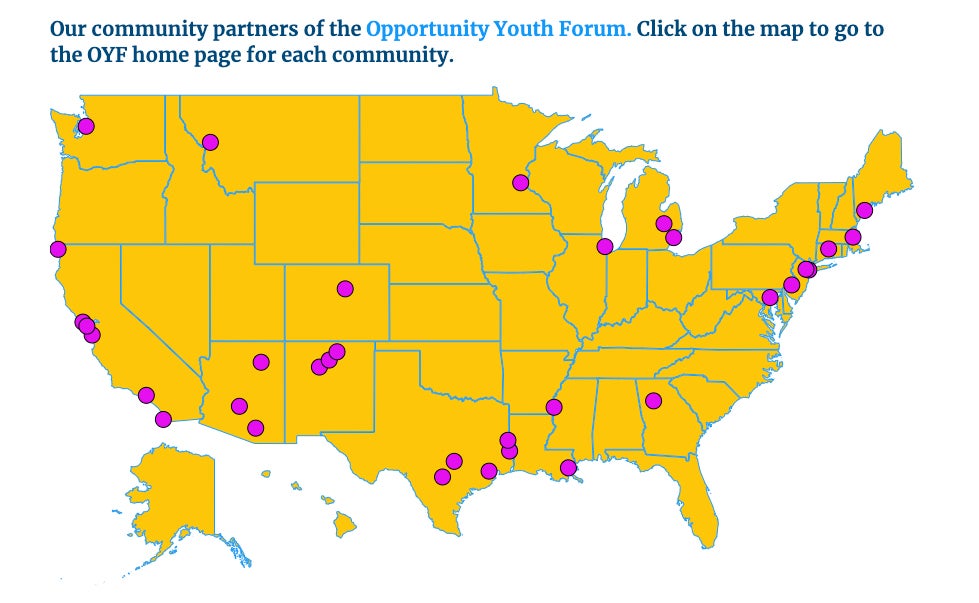Meeting the Moment
Scaling Impact
Giving Thanks
2019 Annual Report
- Statement of Financial Position (unaudited)
- Statement of Financial Position - Assets
- Statement of Financial Position – Liabilities
- Statement of Activities (Unaudited)
- Statement of Activities – Operating Expenses
- Statement of Activities - Operating Revenue
- Net Assets by Restriction
- Assset, Liability, and Net Assets in Totality 2019 vs 2018
- Revenue by Category: 2019 vs. 2018
- Expenses by Category: 2019 vs. 2018
)
Youth on the Move
By the time Kimberly Pham reached middle school, she had decided school was not for her. She ended up dropping out, but eventually found her way back through a GED to college program. It was through these struggles that Pham decided to work with young people to make a difference.
“It ignited the activist in me to stand up and understand more of the issues my peers and I are facing,” says Pham, a national activist and youth leader with Project U-Turn, a Philadelphia-based organization focused on re-engaging young people. “When we don’t invest in youth, they wind up in another system–and the adult education and justice systems treat people differently.”
Since 2012, the Forum for Community Solutions has worked with hundreds of partners across the country to create opportunities for young adults aged 16 to 24–“opportunity youth”–who are otherwise being left behind. Forum for Community Solutions focuses on the most marginalized youth, and particularly on racial and gender equity.
The mission, explains Monique Miles, director of the Aspen Opportunity Youth Forum, is to promote collaborative community-based efforts that build the power and influence of those with the least access to opportunity. The Forum for Community Solutons is a network of more than two dozen urban, rural, and tribal communities who work to reconnect one million young adults to sustainable career and education pathways. Collaborating with dozens of foundations, donors, and other partners, it has invested more than $15 million in 30 communities to scale opportunity and drive local policy and systems change for young adults. The communities span Seattle to Atlanta, Hopi, Arizona to Greenville, Mississippi, and southern Maine to San Francisco.
Shanice Turner, a youth advocate with the program, believes in investing in young people. “I wouldn’t have been able to know that I have a purpose, I have a story, and passions,” she says. “I have a work ethic to deliver, a zeal for life, and a drive to complete my goals. I didn’t grow up learning these things. I acquired the learnings from this movement and from Aspen.”
Pham says that the coming together of communities with a diverse set of backgrounds, geography, and specific regional challenges creates a prime environment for learning. Turner agrees. “I’ve had the opportunity to be part of workshops, being part of committees, being part of boards,” she says. “I’ve been able to have these experiences since I was 20.”
Over the past seven years, community partners including local opportunity youth collaboratives, tribes and youth groups, and national partners have each received between $300,000 and $2 million in direct investments through the Aspen Opportunity Youth Forum. These grants were made possible thanks to more than
20 different philanthropic partners. Most recently the Ballmer Group made a new commitment of $10 million to the Aspen Opportunity Youth Forum, ensuring that the network will continue to grow and expand its impact in the years ahead. Through opportunity youth work, the Forum for Community Solutions has grown to include an adult
and youth justice reform initiative and the Global Opportunity Youth Network, a global initiative catalyzing opportunity for young people age 15-29 who are out of school, unemployed, or working informal jobs.
The team is also deeply engaged with other Institute programs. For example, the Center for Native American Youth is a close partner in the Opportunity Youth Forum and is partnering to grow the number of tribal communities and young people in its network. It’s one more example of how aligned the Institute’s work in communities nationwide that have the most to gain.
